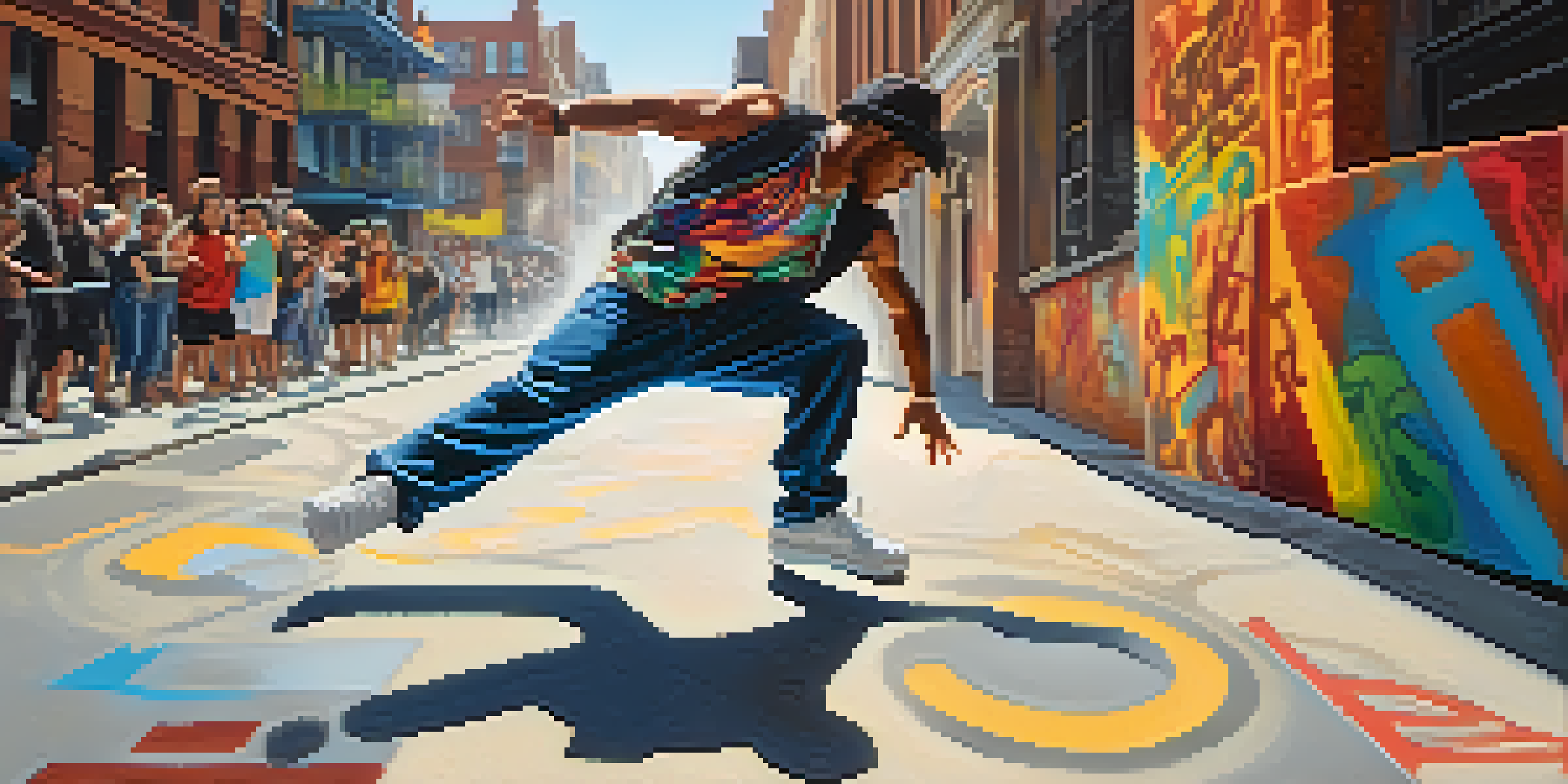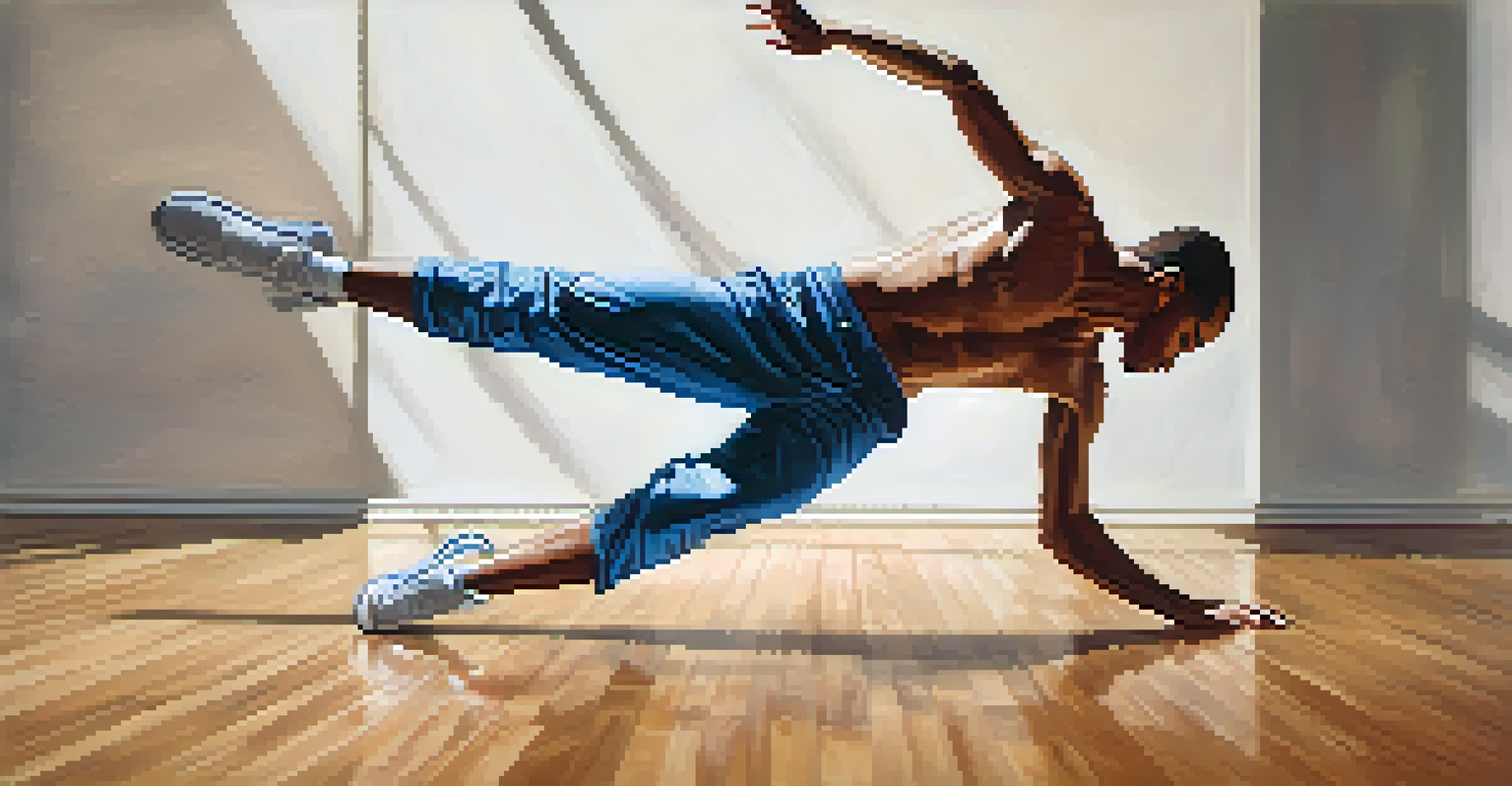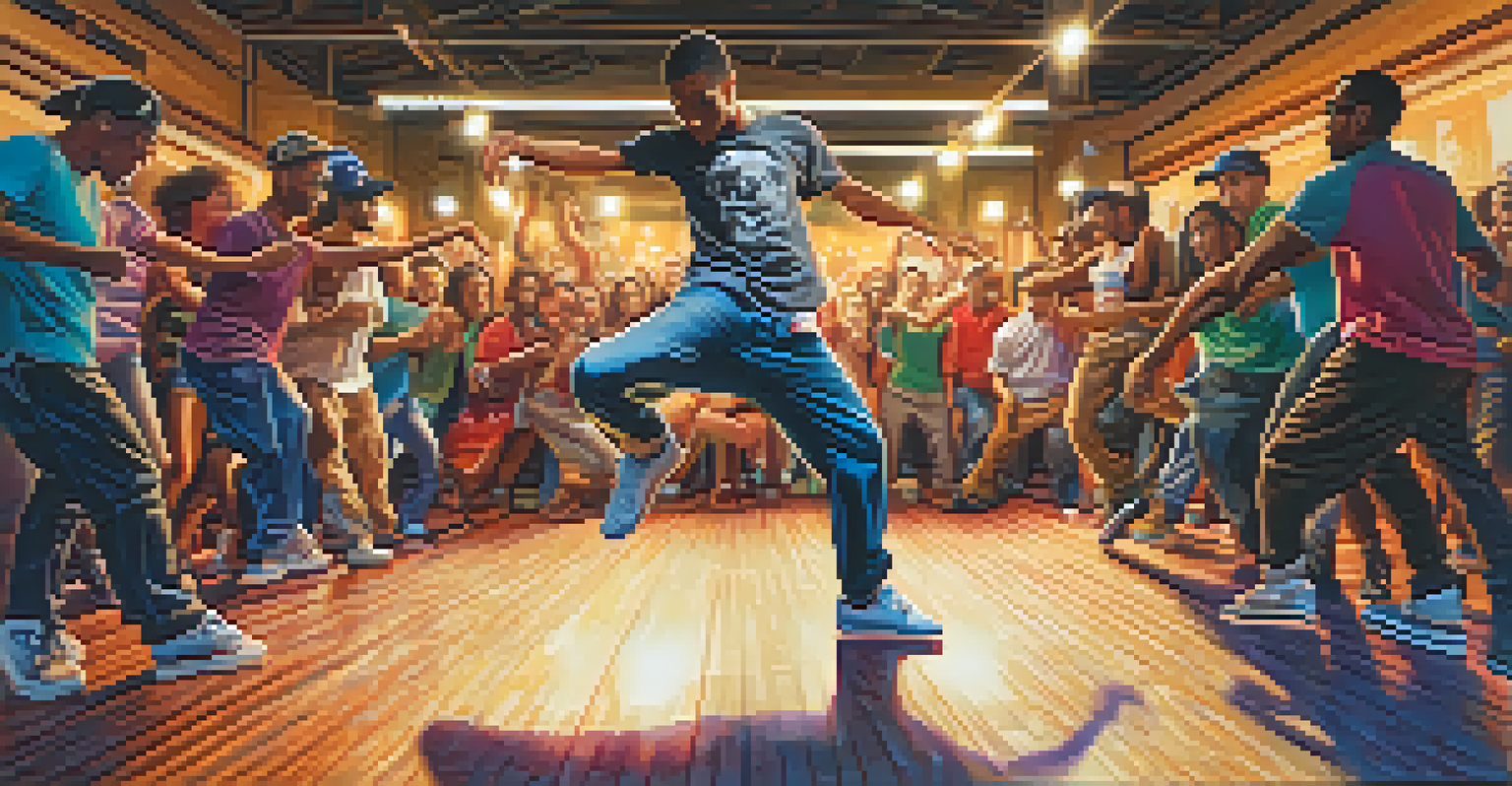Basic Breakdancing Techniques: Foundations of Street Dance

Understanding the Origins of Breakdancing
Breakdancing, also known as b-boying, emerged in the 1970s in the Bronx, New York. It was a response to the vibrant hip-hop culture that was blossoming at the time, combining elements of dance, music, and creative expression. Influenced by various styles like gymnastics and martial arts, breakdancing quickly gained popularity and became a global phenomenon.
Dance is the hidden language of the soul.
As you dive into breakdancing, it's important to appreciate this rich history. Knowing where it came from can enhance your connection to the dance and the community. Each move you learn is not just about technique; it's also about honoring the roots of this incredible art form.
The cultural significance of breakdancing extends beyond dance; it's about self-expression and storytelling. Understanding this context can inspire you to bring your unique flair into your practice, making each performance not just a display of skill but a personal narrative.
Essential Moves: The Toprock
Toprock is the standing portion of breakdancing that serves as an introduction to your style. It involves rhythmic footwork and can set the tone for your entire performance. The beauty of toprock lies in its versatility; you can infuse your personality into every step and create a unique expression of yourself.

To get started, practice basic steps like the Indian Step or the Side Step. These foundational movements help you get comfortable with the rhythm and flow of the music. Think of toprock as your way of greeting the audience; it’s your chance to showcase who you are before diving into more complex moves.
Breakdancing's Rich History
Understanding breakdancing's origins in the Bronx during the 1970s enhances your connection to the dance and its vibrant community.
As you become more confident in your toprock, consider incorporating arm movements and spins to add flair. The key is to stay loose and let the music guide your movements. Remember, toprock is not just about footwork; it's an opportunity to connect with the audience and make a lasting impression.
Mastering the Six-Step: A Core Transition
The six-step is a fundamental footwork move that acts as a bridge between toprock and ground moves. It involves a series of smooth, circular movements that keep you low to the ground. Mastering this technique is crucial, as it serves as the foundation for many other advanced moves in breakdancing.
The only way to make sense out of change is to plunge into it, move with it, and join the dance.
To execute the six-step, start from a crouched position and move your feet in a circular pattern. This movement may seem challenging at first, but practice will make it feel more natural. Think of it like learning to ride a bike; the more you practice, the more intuitive it becomes.
As you refine your six-step, focus on maintaining a fluid motion and staying in sync with the music. Incorporate pauses and accents to add your personal touch. Once you feel comfortable, you can begin experimenting with variations, which will help you develop your unique style.
Ground Moves: Introducing the Freeze
Freezes are iconic breakdancing moves that showcase strength and balance. They involve holding a pose on the ground, often with one or more limbs supporting your weight. Learning to freeze not only adds visual impact to your performance but also demonstrates your control and body awareness.
Start with basic freezes like the Baby Freeze or the Chair Freeze. These moves require practice to build the necessary strength and stability. It’s helpful to break down the positions into manageable steps, ensuring that you understand how to support your body weight safely.
Key Moves: Toprock and Six-Step
Mastering essential moves like toprock and the six-step is crucial for transitioning between styles and showcasing your unique expression.
As you gain confidence in your freezes, challenge yourself by combining them with other moves. The transition from a ground move to a freeze can create dynamic moments in your dance. Remember, the goal is to make your freezes look effortless; this comes with patience and consistent practice.
Building Strength and Flexibility for Breakdancing
Strength and flexibility are crucial elements in breakdancing that enhance your overall performance. Engaging in strength training can help you execute moves more powerfully, while flexibility allows for greater range in your movements. Both are essential for preventing injuries and improving your technique.
Incorporating exercises like push-ups, planks, and leg raises into your routine can build the strength needed for various breakdancing techniques. Meanwhile, stretching exercises, such as yoga or dynamic stretches, can help improve your flexibility, making it easier to perform complex moves.
Balancing strength and flexibility training will not only support your breakdancing journey but also contribute to your overall fitness. As you progress, you'll notice that improved strength and flexibility will enhance your confidence on the dance floor, allowing you to push your limits further.
The Importance of Rhythm and Musicality
Rhythm and musicality are the heartbeats of breakdancing. Understanding the music you dance to and finding your rhythm is just as crucial as mastering the moves. When you dance in sync with the music, your performance becomes more engaging and expressive.
To develop your sense of rhythm, try dancing to different styles of music. Pay attention to the beats, pauses, and accents in the tracks. This practice will help you become more aware of how your movements can complement the music, creating a seamless flow between your dance and the sound.
Importance of Strength and Rhythm
Building strength and flexibility, along with a strong sense of rhythm, are vital for executing breakdancing moves effectively and artistically.
As you grow more comfortable, experiment with improvisation to explore how you can express emotions through your movements. Dance is an art form, and your ability to interpret music will elevate your performances. Embrace the rhythm, and let it guide your creativity on the dance floor.
Practicing with Purpose: Setting Goals
Setting clear goals is vital to your progress in breakdancing. Whether you want to master a specific move or improve your overall technique, having a plan can keep you motivated and focused. Goals give you direction and help measure your progress over time.
Start by identifying what areas you want to work on, and set both short-term and long-term goals. For instance, a short-term goal could be mastering the six-step, while a long-term goal might be performing at a local competition. Documenting your journey can also provide insight into your development.

Remember to celebrate your achievements, no matter how small they may seem. Every step forward is a sign of progress, and acknowledging your growth will keep your passion for breakdancing alive. By practicing with purpose, you'll find yourself continually improving and enjoying the journey along the way.